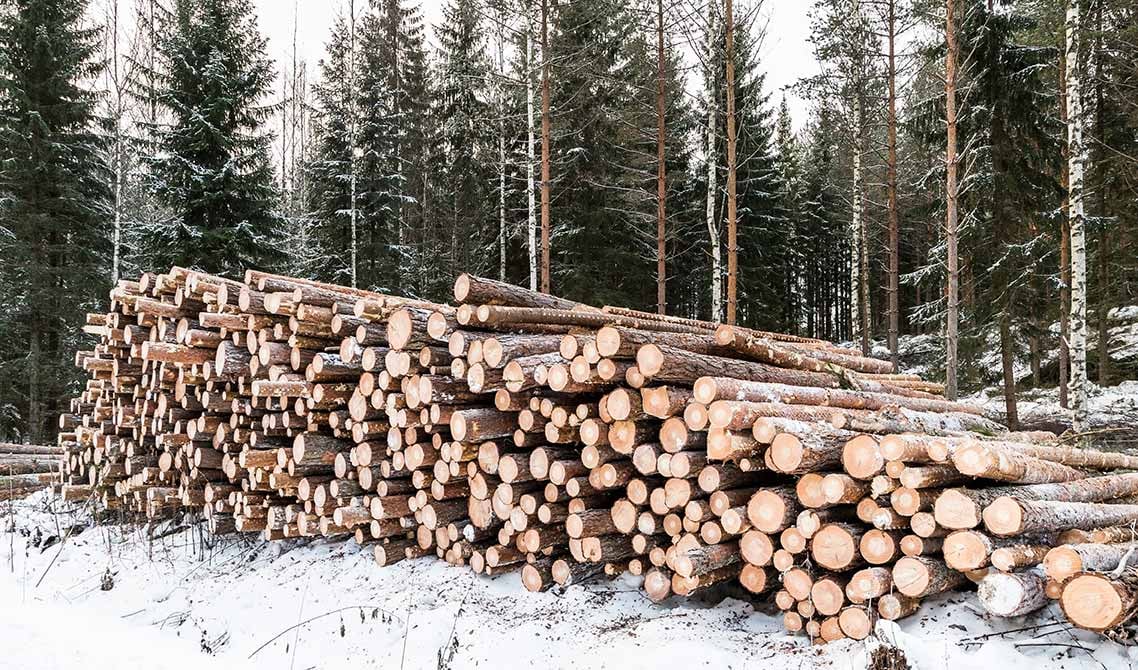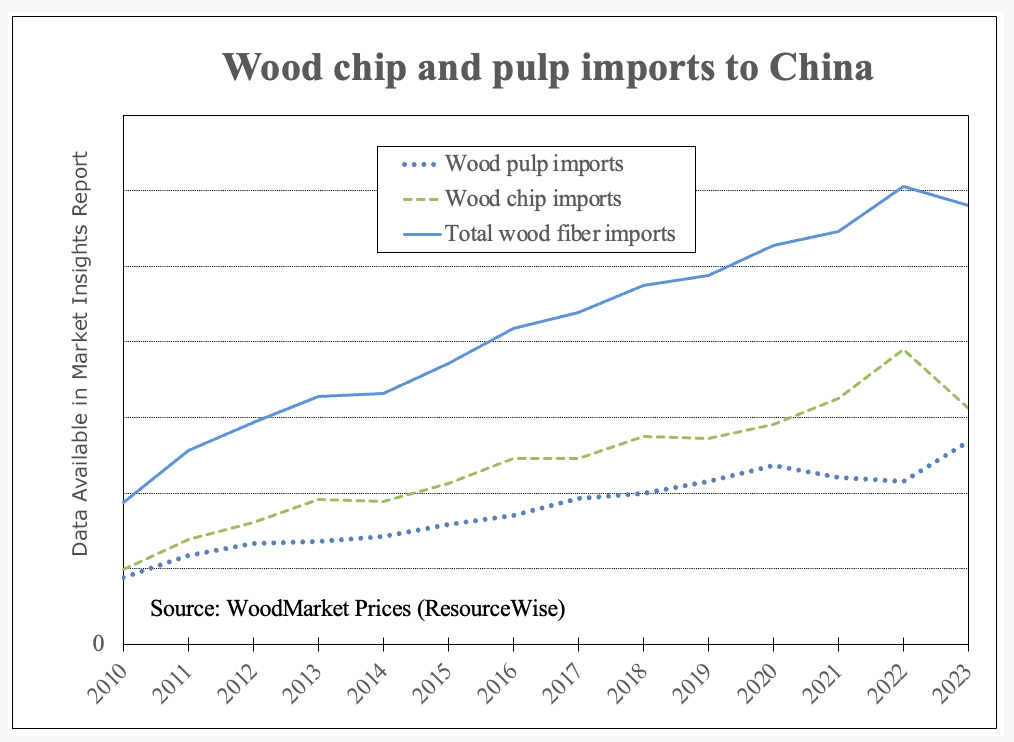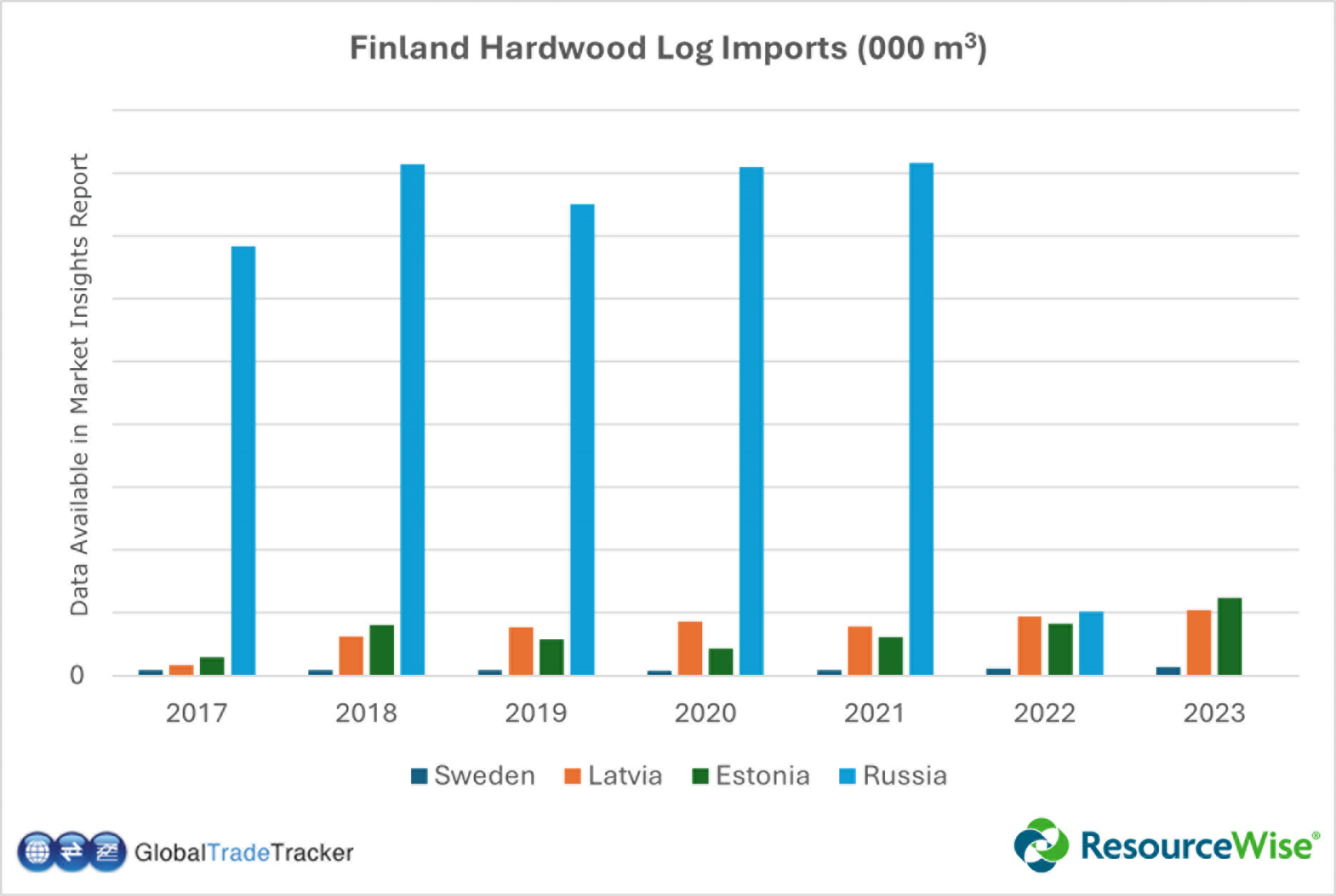4 min read
Northeast US Forestry Update: Maine Feels the Squeeze of Market Dip
ResourceWise
:
Jul 14, '23

Like many forestry businesses across the US, those in Maine and the northeast are feeling the strain of a market downturn. Several factors have caused the industry to feel the pressure.
What does this mean for those working across the forest value chain? And how can you better plan a strategy for these types of situations?
Maine Pulpwood Market Down as Paper Mills Reduce Volume
According to the Bangor Daily News, the sales climate for pulpwood in Maine has seen big changes over the last few months. At least two prominent paper mills buying pulpwood from Maine loggers have drastically reduced their orders. This has created major stress from logging contractors all the way to transportation.
Both Sappi North America in Skowhegan and the ND Paper mill in Rumford, ME significantly cut their normal pulpwood orders. The reduction comes in response to what the mills said are lowering demand and less-than-optimistic market conditions.
The drop in order volume comes in stark contrast from just a year ago. Maine mills were maxing out pulpwood orders to meet what was, at the time, a surge in demand. This led to better pulpwood prices and increased labor demand in Maine and other areas in the northeast.
But no good thing lasts forever, it seems. This year, the booming demand is gone. And with that decrease in orders comes a major pain point for loggers and other forestry businesses.
As the Bangor Daily News report furthered, some logging companies saw drops up to 20% in pulpwood prices per ton, decreasing from $42 to $36. What once were normally recurring orders have now shifted to loggers calling weekly to see if the mills would buy anything.
For many companies, the drop in demand forced them to refocus on other types of sales such as firewood. However, these avenues carry far less earning potential than selling these logs for pulpwood.
What Does the Term “Market Conditions” Really Mean?
From the pulp and paper mill side of the fence, demand follows right along the forest value chain.
To make it simple: loggers sell their pulp to the mills. Mills buy the pulp based on the demand for the products they create. If the demand wanes, production will follow suit. But what are the factors which cause these lulls?
According to Sappi, they will continue to produce pulp in regions around Maine—albeit at a lower volume. They cite market demand and market conditions as the reason they’ve decreased production.
Similarly, ND Paper fully shuttered their mill in Maine for an “extended downtime.” They were slightly more specific in explaining the closure, citing fiber and energy costs as major factors. Beyond price, however, market conditions were also a leading reason for the shutdown.
What exactly do these companies mean when they cite market conditions as a reason for closing? This term will inevitably follow most businesses that must respond by adjusting production based on the demand. But truly understanding the concept goes much further than that.
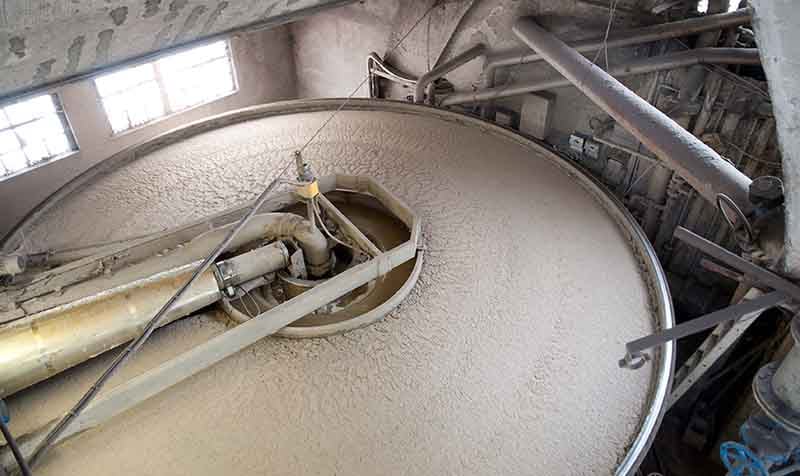
The Bangor Daily News spoke with Patrick Strauch, the executive director of the Forest Products Council of Maine, about this issue. Strauch broke down all the major factors which have created these market conditions in the pulpwood industry:
World Pulpwood Consumption, Especially in China, Is Down
Chinese demand has shown a mostly negative trend relative to imports recently. This followed a continuing dip between 2021 and 2022. In that time, softwood log imports dropped from 23 million m3 to 14 million m3, a staggering decrease.
As it stands now, the verdict is still out as much of China’s wood market remains ambiguous. But this could potentially be good news if demand begins to start climbing upward.
Several Pulpmills Opened in South America, Increasing Competition
Over the past few years, Brazil especially has seen substantial growth in P&P mills. In fact, Brazil has recently taken the 3rd spot in global pulp and paper production. Brazilian production is surpassed only by China and the US.
Such a rise of pulp and paper production inevitably caused some shakeups in these other countries. Because of this, many pulp mills in the US have either shut down or limited their production.
Demand for Print Publications Declined During COVID-19
There’s little doubt that print media has already seen a decline in the Internet age. But that decline was even sharper during the COVID-19 era.
Both facility shutdowns and pulp and paper supply chain issues were to blame. Many print facilities never opened back up. Others have resumed with reduced capacity such as fewer weekly/monthly print issues and an amped-up digital presence.
Broader Impacts in Global Wood Markets
Beyond Maine and the northeast US, many other regions and forest products sectors are experiencing market volatility. As we have covered here at ResourceWise, here are a few of the most relevant stories:
Several Other Prominent Mill Closures
The pain that forestry workers are feeling in Maine is, unfortunately, not an isolated incident. Several paper mills have also closed due to economic factors:
- WestRock's North Charleston Mill
- Plants Sonoco's OCC Mill Closure in Hutchinson, KS
- UPM's Permanent Closure of Publication Paper Machine in Schongau
Ongoing Strain from Russia’s War on Ukraine
Russia’s war on Ukraine has yielded major economic effects across the world. EU countries and beyond have outright banned Russian wood exports. With such a major source now gone, we’ve seen immense disruptions in global wood markets.
Related: China, Russia, and the Uncertain State of Wood Markets for Q2 2023
Related: China: Big Changes in Hardwood and Softwood Imports with Russian Ban
Quality Data Vital to Ongoing Forestry Success
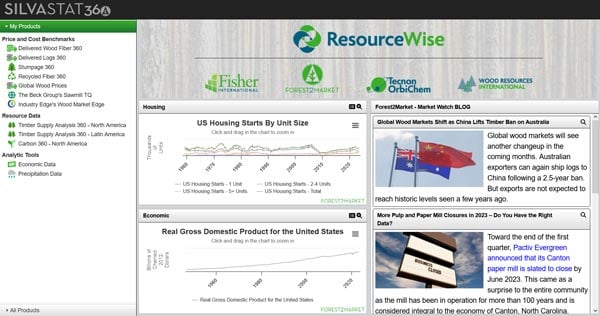
Despite the less-than-ideal situation in forest products, the industry will press on. Regions such as Maine have shown impressive resolve in adapting and responding to the current lows. We will likely see even more ways these businesses can find success in tough economic conditions.
In times like this, the most important tool you can have in your arsenal is quality data. Data matters in a world where global economics affect operations all the way from a mill to a lumber yard. Without the knowledge and insights guiding you forward, you’re simply flying blind.
SilvaStat360 from ResourceWise provides a robust solution across the forest products value chain. Our online tools are populated using real-world historical data directly connected to the forestry industry.
From our Delivered Wood Fiber and Delivered Logs products to Stumpage and Timber Supply Analysis, SilvaStat360 helps your business better plan, prepare, and respond to market volatility. With solid planning, your business can develop a much more successful strategy for the future.
Learn more about SilvaStat360 today and schedule a demo to see how our products can keep your business moving forward.


